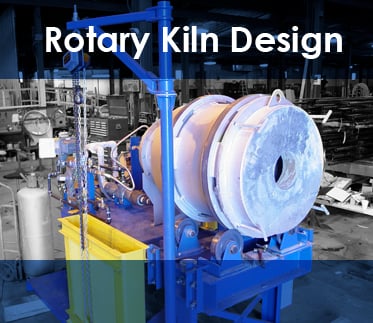Rotary kilns are a highly engineered thermal processing device, capable of carrying out a wide variety of objectives, from catalyst production to metal recovery.
While much of the design of a rotary kiln is engineered around the unique characteristics of the material to be processed and the processing goals, the bearing and drive components of the kiln are fairly standardized.
The bearing and drive components are contained in the drive assembly and two trunnion bases.
The Drive Assembly
The drive assembly is the component that causes the kiln to rotate. A variety of drive assembly
arrangements are available: chain and sprocket, gear drive, friction drive, and direct drive. The need for one drive type over another is primarily dependent on how much horsepower is required.
Chain & Sprocket Drive
A chain and sprocket arrangement works much like a bicycle; there is a large sprocket wrapping around the rotary drum with a chain on it that goes to the reducer and motor. The spinning motor turns a gear box, which spins a small sprocket that is attached by the chain to the large sprocket wrapping around the rotary drum. Chain and sprocket drive setups are reserved for small rotary kilns, running up to 75 horsepower (55kW). This type of arrangement is typically not suitable for larger kilns running above 75 horsepower, but is ideal for smaller jobs, as it is cost-effective and easy to run.
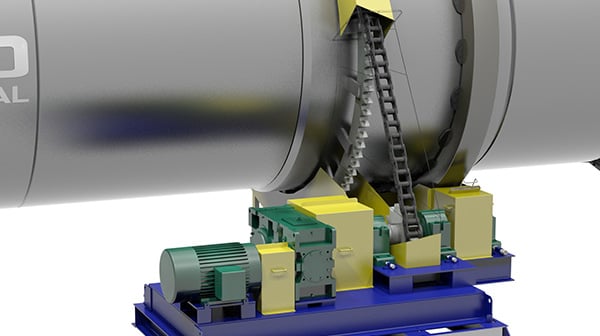
3D model of a chain and sprocket drive assembly
Gear Drive
The gear drive is best for heavy-duty applications running above 75 horsepower. Similar to the chain and sprocket drive, instead of a sprocket wrapped around the girth of the drum, this drive has an actual gear around the drum. This gear meshes with a small gear drive, which rotates it. This type of drive is more costly, but operates better in heavy-duty applications and requires less maintenance.
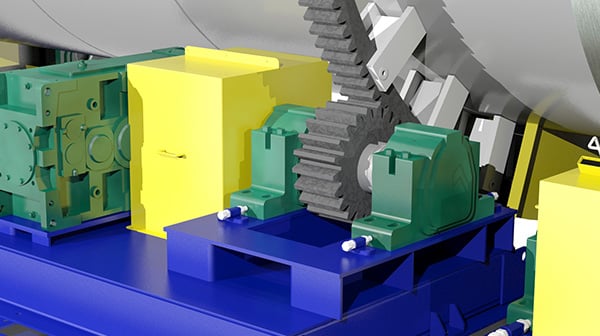
3D model of a gear and pinion drive assembly
Friction Drive
Friction drive assemblies are reserved for small applications requiring low horsepower. This is commonly seen with drums around 6’ (1.8m) and under. With a friction drive, two of the four trunnion wheels are connected by one shaft and driven by a shaft-mounted reducer and motor arrangement.
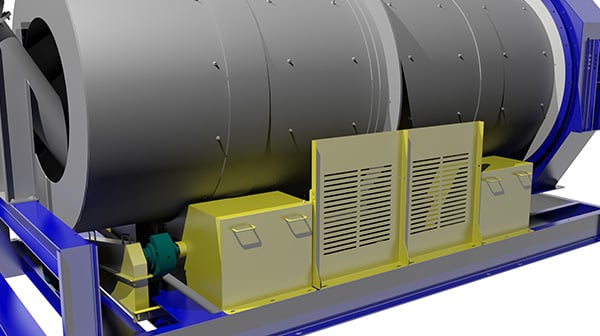
3D model of a friction drive assembly
Direct Drive
Direct drive assemblies are used in small- to medium-size drums, with motors up to 75 horsepower. In this design, a shaft is mounted to a solid discharge end plate at the outlet of the kiln. The motor and reducer are either directly connected to this shaft with a coupling, or a shaft mount arrangement.

3D model of a direct drive assembly
Trunnion Base
The trunnion base supports the weight of the rotary drum and consists of several key components.
Riding Rings
Riding rings are not technically part of the trunnion base, but do contact the trunnion base at the trunnion wheels. Riding rings provide a surface for the kiln load to be distributed. They also provide strength for shell ovality and integrity.
Thrust Rollers
Thrust rollers prevent the drum from drifting or moving horizontally by pushing against the riding rings.
Trunnion Wheels
The trunnion wheels act as the cradle for the rotating drum shell. They ensure smooth and concentric rotation during operation. The wheels are mounted to steel support bases with sealed roller bearings. Support rollers bear the weight of the drum.
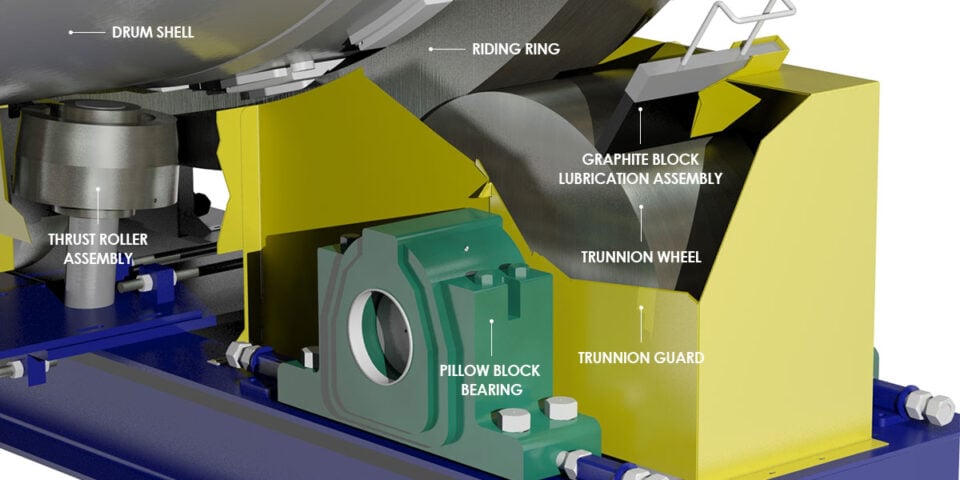
3D model of a rotary kiln trunnion base. Click image to view larger.
Conclusion
The bearing and drive components on a rotary kiln serve as the base of the unit, providing support and rotational movement to the drum. The choice between which type of drive assembly is based on the size of the drum and the horsepower required for operation. As the support system and power behind the drum, quality components are an essential part of minimizing downtime and prolonging the life of the rotary kiln.
FEECO’s custom rotary kilns are engineered and fabricated to the highest quality for a reliable system that stands the test of time. From choosing the right drive assembly, to inspection and maintenance, we have all of your rotary kiln needs covered! For more information on our custom kilns, contact us today!

